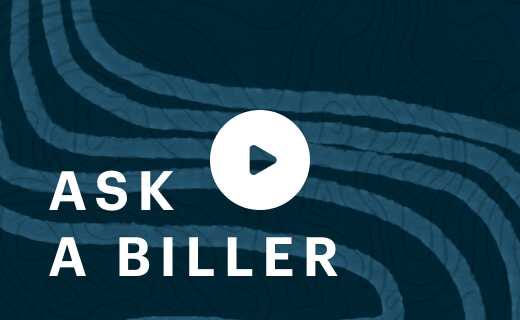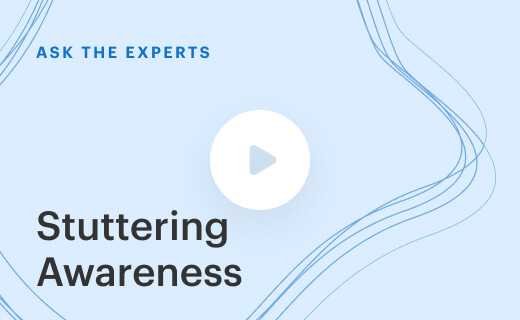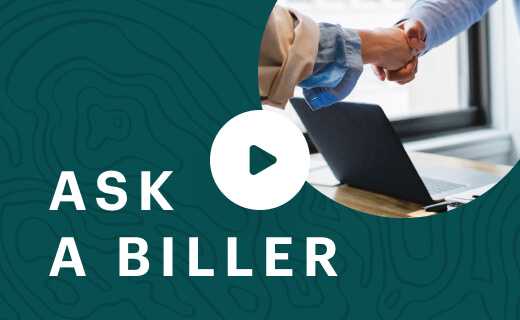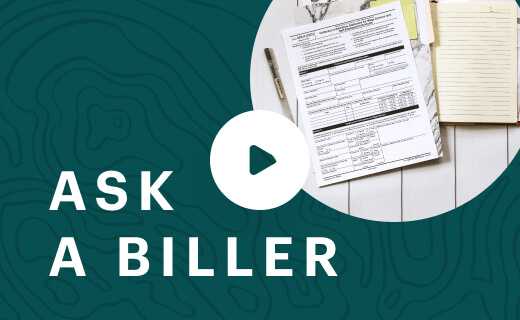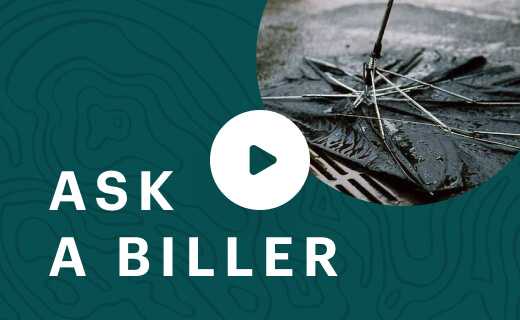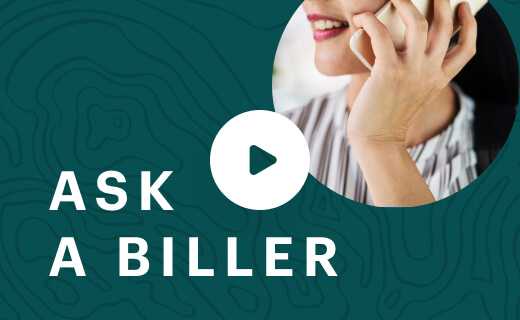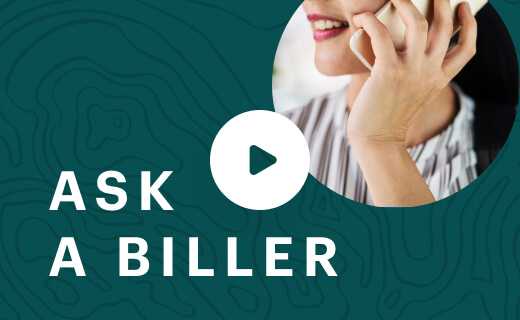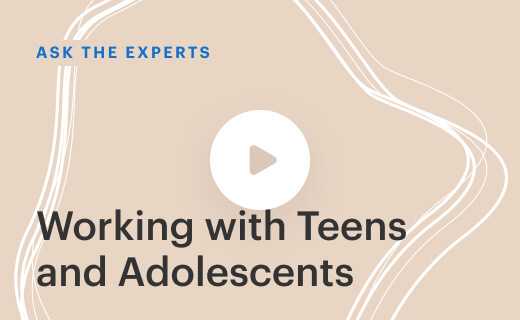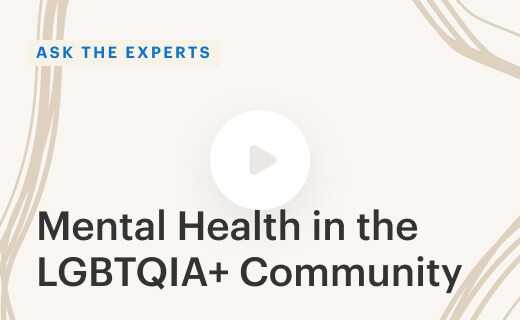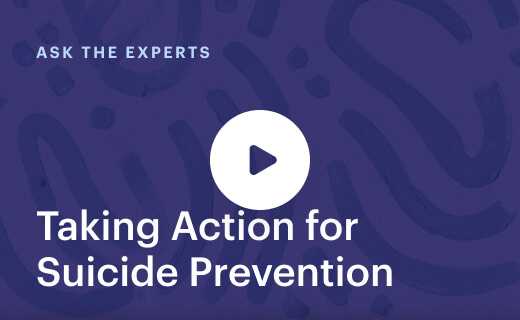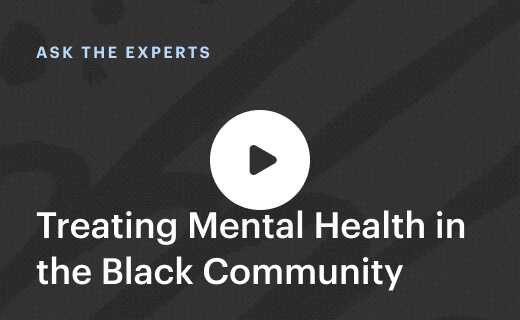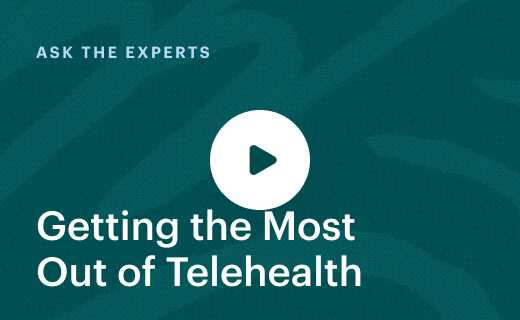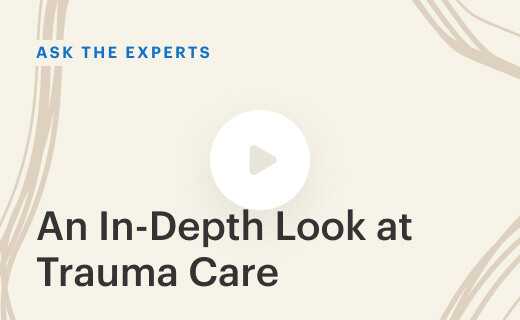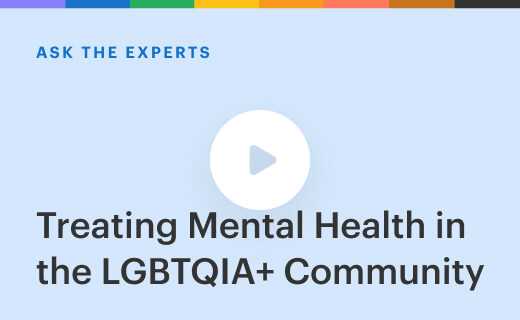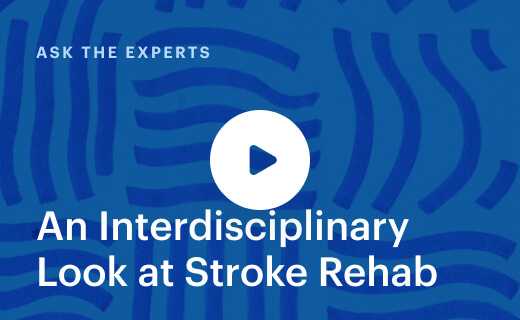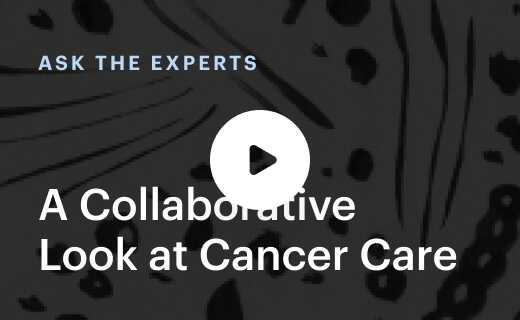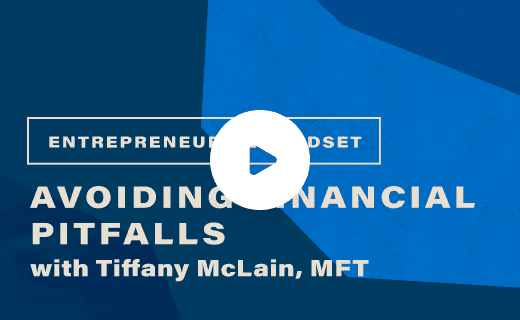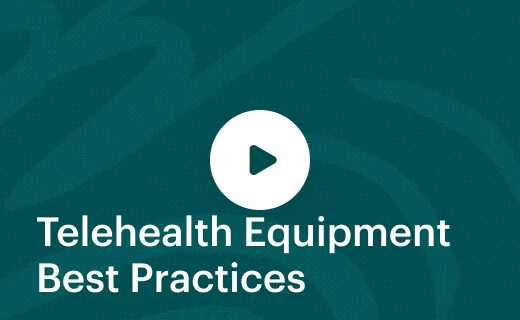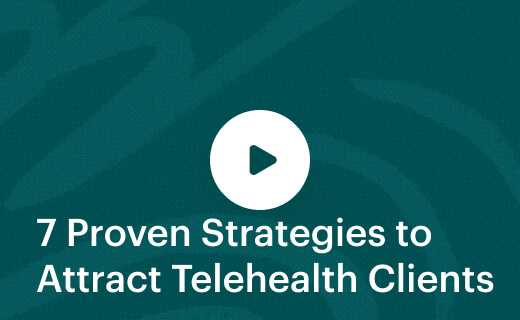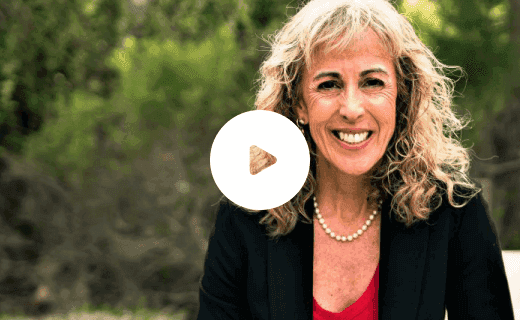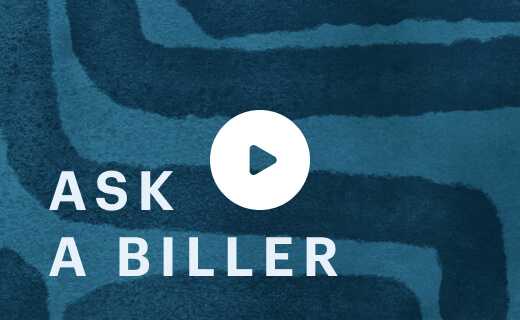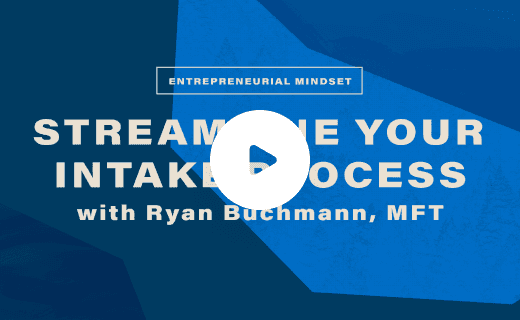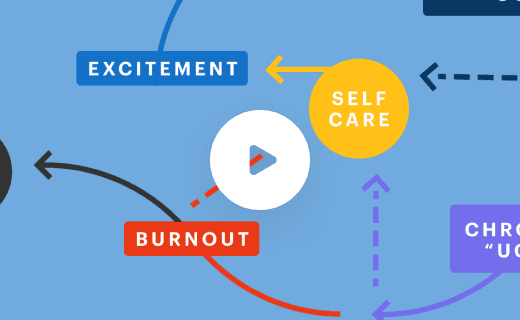An In-Depth Look at Trauma Care
Free 30-day trial, access all this & more:
Want to know about other great webinars?
Join Vanessa Pezo, LCSW, Candice Nicole Hargons, PhD, Diana Anzaldua, LCSW, TCYT as they discuss the best ways to provide trauma-informed counseling.
Moderated by Dr. Jamison Merrell, PsyD, this group of experts review what the best first steps are with trauma clients, different techniques of support, and how a therapist can build and establish trust with their clients —whether they’re virtual or in person.
If you’ve ever been interested in providing trauma-informed counseling to your clients, this webinar is packed with advice and information on the best ways to get started, and how you can look at trauma care with a holistic approach.
- Introductions
- What is one of the most important things to do first with trauma clients?
- How did you get started working with trauma clients?
- How does the therapist decide where to begin?
- How do you support client’s trust building and process when they’ve been farmed and traumatized by the mental health system?
- How do you best help clients find meaning and purpose after a traumatic experience?
- We see so many different types of trauma centered certifications and trainings. How do we know which are worth it? And do any of you have any specific recommendations?
- What role does culture play in healing trauma?
- Is there anything that we haven’t talked about yet today during this webinar that you’d like to share?
1. Introductions
Dr. Jamison Merrell: Hello, everyone. And welcome to our latest ask the experts webinar. I’m so glad to be here with you all today. Our topic for discussion is going to be an in-depth look at trauma care. My name is Dr. Jamison Merrell, and I’m going to be your moderator for this event. I want to thank you all again so much for being here today. And now it is my pleasure to introduce our three panelists starting with Diana Anazaldua. Diana, if you’d like to go ahead and tell us a little bit about yourself and your practice.
Diana Anazaldua: Sure. Hi. My name is Diana Anazaldua and I am a clinical social worker and trauma informed yoga therapist. I was born and raised in Texas and I’ve lived in Austin for 30 years. I’m the founder of Austin Trauma Therapy Center, which is an inclusive trauma recovery center that provides specialized mental health services to individuals in the Austin area. We specialize in treating complex trauma disorders by a disciplinary team of trauma informed practitioners, which includes a nutritionist and a psychiatric mental health nurse practitioner. And I am also the founder of Contigo Wellness, a nonprofit that focuses on creating equity and access to BIPOC communities and mental health care by de-stigmatizing mental health and connecting individuals to culturally responsive therapists. It’s a great honor to be here.
Dr. Jamison Merrell: Thank you so much, Diana. Our next speaker is Vanessa Pezo. Vanessa, if you’d like to introduce yourself and say a few words about your practice.
Vanessa Pezo: Sure. Hello, everyone. My name is Vanessa Pezo and my pronouns are she and her. I am a licensed clinical social worker and I am based in Long Beach, California. I currently run a private practice and my focus is on working with diverse adults who experienced childhood trauma. And I love this field of work. I’m very happy to be here with you all.
Dr. Jamison Merrell: Fantastic. Thank you so much, Vanessa. And our final speaker is Dr. Candace Hargons. Dr. Hargons, if you’d like to introduce yourself.
Dr. Candace Hargons: Hey, y’all. My name is Dr. Candace Hargons. I’m an associate professor at the University of Kentucky in counseling psychology and the founding director for the Center for Healing Racial Trauma. I am in love with the research and the practice. So I do a little bit of both in my work and I’m happy to be here with y’all today. Thank you so much.
Dr. Jamison Merrell: All right. We’ll move right into questions. And our first question was submitted by Amanda B, who asks what is one of the most important things to do first with trauma clients? We’ll turn it over to you first, Dr. Hargons, and then Vanessa, and then Diana.
2. What is one of the most important things to do first with trauma clients?
Dr. Candace Hargons: So my starting place is always to validate, especially when I’m thinking about racial trauma in the context where there’s a lot of gas lighting around traumatic experiences regarding people’s intersecting oppressed identities. And so my hallmark is you ain’t crazy. No. It really happened. Yes. It felt that terribly. Yes. That headache is related to going into a racist workplace or whatever the thing is that they’re presenting, sometimes tentatively, like maybe it was this. And I’m like, yeah. It likely was that. And I think that usually gives folks a deep breath moment where they’re like, oh, this is a place where we can explore this a little bit more. So I usually start with validation before we go further.
Vanessa Pezo: Awesome. For me, one of the most important things that I do first with trauma clients is I really want to make sure that they understand that they have as much power and control in their services as possible. So one of the things I do is I always ask for consent and that begins from our very first consultation call. When I speak with them about their desire for services, I always ask them if it’s okay for me to ask more about what brings them into therapy.
And when we move on to intake and things like that, I always let people know it is absolutely their choice on what they want to talk about and also how far in detail they want to get. I let people know any question I ask at any time in our services together they can decline to answer. I let them know they can say skip or pass. They can hold up a stop sign. They can just not say anything at all and I’ll just move right along. And so I want them to know that everything that they do with me is within their power, their control, and their choice.
Diana Anazaldua: Yeah. I really love that, Vanessa. I also feel like growth and healing happen in connection to one another and in safety. So for me, we’re always assessing, looking to build on that. Right? And aside from the rapport, I’m always looking at assessing for safety, giving them some semblance of what to expect in the first session. And this helps the client to stay in their window of tolerance without being re-traumatized or re-triggered, which can happen in a first session, right, with history taking. And again, this is because for most people who have trauma or shock trauma, it generally occurs without them expecting it. Right? And that overwhelms the nervous system. So I try to do my best to help inform the clients on what to expect in the first session, as well as in future sessions. And unfortunately we don’t live in a trauma informed world so it’s important to help the clients feel supported and safe in that first session.
Dr. Jamison Merrell: Fantastic. Really beautiful answers, everybody. Then our next question is, many of my fellow clinicians are nervous to get started working with trauma clients. I’m interested to hear how each of the panelists got started working with this community. So definitely something I’ve heard as well, that it can feel a little intimidating to start this work and to get into it. So I’d love to hear from each of you starting with Vanessa, and then Diana, and then Dr. Hargons, what you have to add on this question.
3. How did you get started working with trauma clients?
Vanessa Pezo: So I’ll start by saying that if you are working with people you are working with trauma, whether you are directly addressing it or not and that is one of the reasons why I’m so happy to be a part of this webinar. I think that these conversations are so important. For me, I became interested in trauma while I was in graduate school.
It was something that has touched my family and I wanted to learn more about how it had impacted various family members generationally and also within my immediate family. So I started to do a lot of research, a lot of papers and things on trauma and trauma informed care. And I was actually really lucky that when I was in graduate school, my second year, a nonprofit opened, which is called The Long Beach Trauma Recovery Center. And it is state funded. It provides services to crime victims and I was able to do my second year internship there. So that was really like diving head in to this work. And I had been there ever since. It was a really, really valuable experience for me, not only because of the training I received, but also the consistent consultation and support of working with other providers who are also providing trauma care.
Diana Anazaldua: Yeah. And for me, I mean, I’m pretty open with my story and a little bit of a trigger warning for some. I grew up in an abusive environment with an alcoholic father and an emotionally disengaged mother. So my needs as a child were unmet and my parents were teen parents, likely with generational and developmental trauma of their own. And that led me to also becoming a teen mom at 14. So I’m a trauma survivor myself and I not only relate to some of the traumatized populations, but I have a deep understanding of the pain that comes with trauma and some of what they may be suffering from, right, that pain. And so my hope is to help others heal from that pain. And I know that trauma can feel nerve wracking. Thinking about working with traumatized populations, especially complex trauma, but, like Vanessa said sometimes clients present with surface level stuff and then it end up when the therapeutic alliance grows and develops, you end up finding out that there’s a deeper trauma. Right? So just something to be aware of and then also not everyone’s ready to call it trauma. So, yeah.
Dr. Candace Hargons: So I came through my training program during the birth of the movement for black lives. And I was on my last practicum before internship in 2013 when Trayvon Martin was murdered. And then the Charleston massacre happened during my internship year. And so there was so much racial trauma that was highly publicized in the media. And I actually intended to study and practice in sexual wellness, which is my other area of interest. But as a black woman observing these experiences, working with people therapeutically, and then having my own experiences of vicarious trauma through engagement in that movement, I was like I got to do something. I’m learning all these skills. I was in a stress clinic learning all these skills in mind, body techniques. And I was like, how are we applying this to people who look like me? How are we applying meditation and mind body work and stress reduction and trauma work to folks who look like me?
And so I created the black lives matter meditation for healing racial trauma in my first or second year as a professor because I wanted to give something that was free and openly accessible related specifically to racial trauma. And then folks let me know, because it’s really vulnerable to create something, right, folks let me know that that was something that the community desired and needed. And so then in 2019 was when I founded the Center for Healing Racial Trauma. So it wasn’t that I intended to immerse myself in this world, but I really hear Vanessa’s point that if you work with people, you are going to work with trauma, but for this specific type of trauma, that was how I became involved.
Dr. Jamison Merrell: Okay. And this leads very nicely into our next question, which is, as there are so many different techniques to support clients, how does the therapist decide where to begin? So I’ll have Diana answer this first and then Candice and then Dr. Hargons.
4. How does the therapist decide where to begin?
Diana Anazaldua: Yeah. So I really feel like it’s preferential. You know? If it’s something like EMDR, I invite you to spend some time explaining with the client what that modality is and what to expect. I also invite you to decide on one that you feel comfortable doing. And also keeping in mind how you show up for the client. Right? And not making it about your own agenda, rather allowing the clients to have agency and choose what they feel they need. And again, because we don’t live in a trauma informed world, at every session, I asked the client, I’m always checking in, what would you like for yourself in the session today? Right? And you know that really helps bring up that agency and that autonomy, which is really important in this work.
Vanessa Pezo: Yes. Thank you, Diana. So that is a question I ask myself every day. You know, where do I start? Because trauma is so complex and so unique to the individual. There are so many different modalities, techniques, and types of service that we can provide to trauma survivors that can aid in their healing. One thing that was really helpful for me was to read Trauma and Recovery by Dr. Judith Herman. And she provides an overarching model of trauma care that is actually three phased. The first phase is focused on safety and stabilization. And so this is where we teach clients skills that help them manage their current life to stress. We can help teach them things like boundaries, other things that can help them feel safe, to help them to stay safe and help stabilize them.
The second phase is then remembrance and mourning. And that is more so where some of our more trauma-focused treatments may come in, like EMDR, like prolonged exposure, like cognitive processing therapy. And then the third phase is actually on reconnection. And that is, who am I beyond this trauma? So for me having that as an overarching model helps guide me in my treatment with the folks I work with because I’m first assessing do they have the skills, the resources, and the tools to really manage what’s coming up for them in day to day. That’s going to be really important prior to doing any work that more directly addresses the trauma because I don’t want to re-traumatize anyone. I want them to feel like they have the skills and the tools to handle what comes up within our sessions and also between. And so having that as an overarching model has been very helpful for me in my work.
Dr. Candace Hargons: I love that model. Thanks for sharing that. I can’t wait to read that book. So I usually start with… I don’t think there’s a usual. I usually start with considering a conversation with the client, like something about observing a person as we’re talking lets me know. So if anybody cares about Myers-Briggs, I’m an INFJ and the N is the thing that lets me know where I need to go. So that’s the usual. It’s like what is the sense I’m getting in this moment about where we could go? And then to Diana’s point, I check it out with the client. I’m like, I’m wondering if we could do some breathing work here or I’m wondering if we could do and kind of give that autonomy and decision making piece back to the client. But usually my brain gives me that intuitive, oh, this person hasn’t breathed through this whole conversation.
So we need to start with breath or they told me about their story and they were stoic. And so maybe we need to start with identifying emotions. And so it depends on the client, like both of you have said. It really is something that happens at the intuitive level for me. But I do draw upon a lot of these modalities. And I think each client is going to present their trauma in whatever way is socialized for them to present trauma. And then whatever way is in the relationship that you have together supported. So I usually go there first with the intuition.
Dr. Jamison Merrell: All right. And then this is something that has entered our world a lot more in the last couple of years. So kind of talking a little bit about how these techniques factor into virtual work, what are each of the panelists’ recommendations for clinical approaches for treatment when seeing clients virtually? And for this one, I will start with you, Dr. Hargons, and then, Diana, I want to follow up there.
Dr. Candace Hargons: So make sure you know the resources that are available in your community and the community of the person you’re working with because virtual allows us to see people throughout our state or wherever we’re licensed. And so once they do that intake paperwork at the outset before you’ve had a chance to see each other, I would say finding out what resources are available nearest to them is an important ethical step just because depending on the level of crisis, you might want to be able to refer them to someone more immediately than you can see them. And I think also knowing who their primary contact person who loves them, and it’s so interesting because when I’m working with racial trauma and folks are telling me about their experiences, very often it’s not going to be law enforcement and it’s not going to be sometimes even EMT. I’m like, well, who do you trust most?
Who is closest to you? Who loves you most where you feel like you would be safe if you were in a crisis moment or if something really profound comes up in therapy and you need someone to hold you, you need somebody to be there with you? Usually it’s not going to be the typical first responders. So when I’m thinking about how I develop the treatment plan, that’s my initial thing. That’s one of my first recommendations when working virtually. And the training that I received to work with people virtually came well after I had finished my training in my doctoral program. Right? Because we weren’t on that precipice in the same way. And so I like to be able to stay abreast of what’s new, but that’s the thing I do most immediately when thinking about working virtually.
Diana Anazaldua: Yeah. And I think during this pandemic or global collective trauma, we’re seeing an increase in anxiety and depression and irritability. You know, people’s nervous systems are in a hyper arousal state. People are dysregulated. So anything that can help support the clients to regulate their nervous system is really important. I particularly like to use polyvagal theory virtually because I think it offers this grounding and resourcing ability, this really beneficial and supportive for the clients and helping them get their nervous system back to parasympathetic state. I use a number of somatic based approaches to help support the vagus nerve, which can also support that rest and digest process. And I also use EMDR virtually. But I tend to spend several sessions again, focusing on that grounding and having good vagal tone before moving into trauma work.
Dr. Jamison Merrell: Great. Thank you both so much. And our next question is from Rachel R. who asks, how do you support client’s trust building and process when they’ve been farmed in traumatized by the mental health system? So perhaps, you know, that has contributed to the trauma they’ve experienced in some way. So I’ll start with Diana for this question. And then if anyone else would like to add on as well.
5. How do you support client’s trust building and process when they’ve been farmed and traumatized by the mental health system?
Diana Anazaldua: Yeah. So I actually have a client that I’ve been working with for quite some time now who has a mental health trauma. And it is a rather complex case. And I validate their feelings, every single one that shows up. It’s really slow work due to the idea of mental health care being a trigger for this person. You know, we move into that post-traumatic wisdom through encouragement of their process, even if it’s just showing up to the session. And in the work we practice tools and skills discussed in the session. And then again, encouraging that repetition. So also I think it provides a sense of this new therapeutic healing interaction that can really help create that new experience to support the growth, support validation and encouragement in a nonjudgmental space is what I would say.
Dr. Candace Hargons: I’d like to jump in on that one. I wholeheartedly agree with where you’re at with that because I’d typically use interpersonal process as a thought. So the relationship has to become a corrective emotional experience, but the way I supervise students who are in training to become psychologists and the way I approach it is that we don’t come into this work inherently trustworthy so as clinicians, as psychologists, as social workers, as counselors, as MFTs. We are not inherently trustworthy, especially when I’m thinking about people with racially and ethnically marginalized identities. And so I let them know that I don’t think they should trust me. You don’t have any reason to trust me because you don’t know me. And so my goal here is to build a type of relationship with you where we can develop trust for each other and where I can earn your trust.
And you’ll see that in the evidence of my relationship, as opposed to me saying, trust me first, and maybe this will work. And I think that takes some weight off because in allied health professional work typically it’s like, well, trust your doctor and they’re going to do fine by you. But that’s not been the case if you’ve experienced the history of the Tuskegee experiment or you’ve experienced being sterilized and many of our cultures have dealt with that. And so when I think about mental health treatment, it’s the same. And I like to offer clients that and offer that to my students who are in training. Don’t go into it assuming that people owe you trust or even respect, if I’m going to be honest. Those are things that have to be earned and you do that by relationship building and by not betraying their trust throughout the process of the therapeutic relationship. So offering the relationship of the therapy as the corrective emotional experience is both healing, in addition to whatever interventions you might choose to use.
Vanessa Pezo: And I’ll just jump in because I appreciate what you both said though much. And I think it’s so important in our work with our clients. And I’ll also add, don’t be afraid to check in with the client on the relationship, especially as you’re building that trust. I’ll ask folks after a couple of sessions, how are things going for you so far? How our connection feeling? Is there anything that I’ve said and done so far that has maybe been helpful or has been not helpful or even potentially harmful? And I am okay with owning it and even apologizing when I have done something where maybe I’ve misunderstood or my privilege has gotten in the way of me seeing something from the client’s perspective and the way that they view it. And so the more we can be open and honest with our clients in that way, we can role model what a healthy relationship can be like.
Dr. Candace Hargons: Can I add one more piece? Because you just hit the nail on the head. So the question of, how would I know if I hurt you, if you weren’t ready to tell me? What would I pick up on? That’s what I use often. How would I know if that thing I tried was terrible? And they usually laugh before we get to that moment. And they’re like, well, I probably would sit back in my seat like this, or… Because many times when a person is experienced severe trauma in particular, like to the point that both of you made, boundaries have to be reestablished and being able to articulate and advocate for yourself is something that they’re learning again. And so I’m like, well, let me know through what would show up so that I can know. I might miss a few sessions. Okay. Great. So I know what to check in on.
Dr. Jamison Merrell: Great points, everybody. So yeah. It really speaks to the importance of establishing that trust, being open, and having those difficult conversations to make sure that you are checking in. And our next question is how to best help clients find meaning and purpose after a traumatic experience. So that next step how to move forward. So for this one, I’ll start with you, Vanessa, and then Diana.
6. How do you best help clients find meaning and purpose after a traumatic experience?
Vanessa Pezo: So how to best help clients find meaning and purpose after a traumatic experience? I want to first differentiate that when I address this, what I’m not asking clients to do is find a lesson in their trauma or find a reason why it happened or something like that. What I can help clients to do is understand what did this event or this experience mean to them? And how did it impact them? That allows us to engage in the type of trauma reprocessing that can be really helpful for them to be able to move forward.
Another thing that we will sometimes talk about as well is there is something called post-traumatic growth. And so sometimes after clients have been able to reprocess their traumas and not be so inhibited by some of those traumatic stress symptoms, they do find that they have an increased capacity for maybe empathy or connection with others, understanding the suffering that others may experience. Sometimes in their healing, they learn skills or tools that maybe they hadn’t had before, like assertive communication or like having boundaries. And so that fits really neatly in with phase three of the model I introduced earlier by Judith Herman, where part of the work after really getting into trauma is who am I beyond that.
Diana Anazaldua: Yeah. That’s great. I’ll share a little bit too. Trauma patterns are created in response to survival. So they’re not always easy to shift, but creating a safe, nonjudgmental space that allows the clients to share without judgment after that traumatic experience can be really helpful. You know, when we have a trauma, the safety is compromised. Right? So you want to help them stay in the present and in the moment and look for some small glimmers of hope in that moment. And similar to what Vanessa said, right, this post-traumatic wisdom or post-traumatic growth or I’ve even heard it called post-traumatic resilience, looking at the strengths and supporting them and identifying a support system or resources and really helping them reestablish some effective coping strategies and trying to get them back to pre-crisis state or pre-trauma state. Right? And by integrating some of the trauma, and what I mean by that is you’re looking at the parts of their life that they enjoyed pre-trauma and then exploring future areas of mitigating that trauma. Right? How do you keep yourself safe moving forward?
Dr. Jamison Merrell: Absolutely. And our next question, so we see so many different types of trauma centered certifications and trainings. How do we know which are worth it? And do any of you have any specific recommendations? So I’ll start with you again, Vanessa, and then Diana.
7. We see so many different types of trauma centered certifications and trainings. How do we know which are worth it? And do any of you have any specific recommendations?
Vanessa Pezo: There are so many trainings and certifications and programs out there. And sometimes I have a hard time thinking what is good and so many things sound interesting, but I think that at the beginning of your work in developing your trauma expertise, it’s really important to develop first a foundational understanding of what trauma is, how trauma impacts a person, their emotional well-being, their physical wellbeing, their spiritual wellbeing, and also how they connect with others, their social abilities, also how trauma impacts communities, how trauma impacts culture, how trauma impacts us across time. Right?
This is a very expansive experience. And so in order to develop that foundation, I think there are so many incredible books out there that you can read. One that people bring up often as the Body Keeps the Score, which is of course great. Trauma and Recovery by Judith Herman is one that I really adore. My Grandmother’s Hands by Resmaa Menakem that talks about racialized trauma is also really powerful. Deb Dana and her work on polyvagal theory. And that will help you to decide once you have that foundational understanding what treatments or what modalities really fit with the way that you work. There are a lot of approaches to trauma. Some are very top down, more of the CPT style approaches like cognitive processing therapy or prolonged exposure therapy. Some are very bottom up or more somatic like somatic experiencing or sensory motor, even EMDR. However, being trained in a modality, isn’t the same as being trained in trauma. So I think it’s important to have that first foundation and then being able to integrate those modalities into your practice that fit with how you work.
Diana Anazaldua: Yeah. That’s really great. That’s a great point, Vanessa, because it’s very true. You can go and get all the trainings, but being well versed in trauma is really important. And what I will say about all of the different trauma certifications that are out there, I think that it’s preference, but also time and money commitment, right, this monetary commitment. Several of the trainings that are out there have a two and a half, three year training commitment. Right? And those are going to cost you a several thousand dollars and EMDR is a quarter of that. And it might take you a year and a half to complete, maybe even two years to be fully certified. Mindfulness based approaches are also really great for helping the client to regulate. And there’s been a lot of recent studies on how it can positively impact the structure and the functions of the brain post-trauma. So I would say to do your research and ask other therapists, watch videos. Really inform yourself on where you’d like to go in deepening that training,
Dr. Candace Hargons: I might add one more piece. It’s in concert with what you were just describing. So you want to also look into some of the research on has it been used with the client base that you’re interested in. What’s the evidence for it? And that doesn’t mean that just because it doesn’t have an evidence base that it’s not useful. So I don’t want to make that point either. But that there might be some studies out there. So has it been used with veterans if veterans are your population? Has it been used with women or new mothers or whoever you’re interested in working with? I would look just to see what the efficacy has been on the type of training or the type of methodology or modality you’re interested in learning about before you invest that much money, like you said.
Dr. Jamison Merrell: Yeah. Really great things to be thinking about when considering where to go with these trainings, especially when they can be very time and cost intensive. Okay. And our next question here is from Dana, who asks, what role does culture play in healing trauma? So I’ll start with you, Vanessa, and then Diana and Dr. Hargons, if there’s anything you’d like to add as well.
8. What role does culture play in healing trauma?
Vanessa Pezo: Culture can be a huge factor in healing from trauma. Many of the people that I work with have a lot of historical and generational trauma. And oftentimes that’s a huge focus for people. You know, seeing that there is this kind of legacy of trauma being passed from generation to generation. And that is true. Those things do show up in our families and in our cultural even practices and other things. I think it’s also important to remind people that if they come from a group that has experienced generational trauma, that they also carry generational resiliency, and there are a lot of strengths and a lot of methods for survival that their culture has also passed along to them.
And so as much as we talk about the impact of generational trauma, I like to focus on generational resiliency. I often ask people, what are the identities that are important to you? What are some of the strengths that come from those identities? And that also helps us to tap into some resources or coping tools that can be useful in their healing. We will also sometimes do guided meditations and other things that help them to connect to some of these cultural strengths or even bringing in cultural practices into the healing, because at its core one of the things trauma does is it disconnects us. It can disconnect us from our own self and our own body. It can also disconnect us from the people around us and we might feel very isolated or alone. The more that we can tap into those cultural strengths and people can feel that sense of group membership and belonging, the more they’re able to move beyond some of the impacts of trauma. And so that is absolutely a conversation to have with all of your clients.
Diana Anazaldua: Yes. Yes. Yes. I love everything that Vanessa just said. And I just want to say it is extremely important. Right? You know, addressing culture in healing trauma, it’s so, so, so relevant. I think that it supports the person’s ability to authentically show up as themselves and actually receive help. Right? As opposed to experiencing any kind of microaggression and potential bias from the therapist. In my opinion, culturally relevant care is one of the biggest unspoken parts of therapeutic healing process. And this may be why so many people leave therapy, to be seen and heard that feeling you get when you know someone’s really taking the time to listen and not only understand your experience, but relate to it too. I think it’s really powerful.
Dr. Candace Hargons: Yeah. I love that. I love everything you said, Vanessa and Diana. Hitting that point about cultural ways of healing is the main vein of our work. Because we came into this having had generations, like you said, of cultural trauma that we survived and many of us thrived through. And so how did we do that? Well, let’s remember that. Let’s recall that because most of us didn’t come through training programs where that was a focal point. And so we have to recall that for ourselves or recall that in community. And so if you’re from Appalachia and your culture has a lot to do with food and taking care of each other and having each other’s back, then you want to draw on that if you’re working with people who come from Appalachian communities. If you are a black person and song and singing and using music to thrive and heal is a part, sometimes we weave that into our practice.
So we were doing a therapy intensive with a black woman, and we did R&B like music thing that we were like using songs that were from her youth and from her early adulthood and talking about the relevance of them and singing some of them and playing games with them. We use black girlhood games and thinking about how she needed to reclaim joy in her life because she didn’t feel like she deserved it anymore. So I think about the things that helped us thrive. Dance is one of those things. Drumming is one of those things. I just finished attending the Association of Black Psychologists conference. And the drumming process was explained as a cultural modality of healing with different drum timbers due to the body and due to a person’s healing process. I went to NLPA two years ago with one of my mentors and they were talking about hip hop music and how to use that as a vehicle for healing.
And I got exposed to some hip hop music in Spanish. It was like, oh my goodness. I don’t even know what’s being said, but I know it’s hitting home in a way because of the beat. And so I think about culture as a way of healing, but not only the community building that comes from it, but just remembering that you already had the tools to thrive and survive, that your grandma, like My Grandmother’s Hands, that book, when you talk about singing together, being together, holding hands, laying hands on a person. All of those things came with us. Those things weren’t able to be taken from us. And so always building that back into the therapeutic process, whatever your cultural identity is, going deep into that and finding out more for the cultures that you’re not a part of.
Dr. Jamison Merrell: Yeah. So much beauty to draw from in any of the cultures that our clients are from and a part of. So at this point, I’m now going to turn it over to final thoughts. So if there’s anything that we haven’t talked about yet today during this webinar, you’d like to share, that you think is meaningful, that you’d like to speak to, I’ll give you each a chance to share any last thoughts that you have here. Starting with you, Dr. Hargons, and then Vanessa, and then Diana.
9. Is there anything that we haven’t talked about yet today during this webinar that you’d like to share?
Dr. Candace Hargons: The foundation of trauma work for me has always been reminding people that they are inherently worthy, that they came into the world worthy, and they will leave the world worthy. And that the trauma experience does not change that inherent worthiness, that their identities don’t change that inherent worthiness, that their amount of work they do or don’t do doesn’t change that inherent worthiness. So that I help them remove all the conditions for their sense of self and their humanity. And I think that if you consider trauma a lapse in the way you identify yourself as human or that someone treated you inhumanely, then helping them come back to that is really important.
So I just always leave with that for those of you who are in the audience, because as clinicians, that vicarious trauma is real. You are inherently worthy. And if you have to say, I’m not seeing clients this week, because I need to heal, you’re still inherently worthy. And that we need to ourselves in that same compassionate lens that we do for clients, especially if you intend to work with people who have severe and complex trauma, because the work is taxing, even though it’s rewarding.
Vanessa Pezo: That was beautiful, Dr. Hargons. Thank you. And I love everything that you said. My final thought is that I think that it is absolutely an honor to be able to support someone on their journey to healing and recovery. It is always of the utmost importance for me to remember that I am not the leader in this, and I am not even the healer in this, that I have the honor of maybe providing some knowledge or some tools that someone wouldn’t have had and that allows them to tap into their own innate ability to heal and to thrive and to be resilient. And so that is something that I take very seriously, and that is something that I will always feel honored to do. And it requires a lot of compassion for my clients and also compassion for myself because healing trauma isn’t easy and there will not be an easy way to do that for most people. And so to be gentle with ourselves as we go on that journey and help people to tap into the hope that it’s possible to recover.
Diana Anazaldua: Yes. Yes. I loved everything that you both said so far. I will just say that trauma work is hard. It is very hard and we have to do a lot of self care having that self kindness. Right? And also this work, it’s transformative. It’s beautiful, beautiful work because we’re not only helping in some ways to support the healing of the individual, right, in transforming their life, but also the lives around them. Right? And eventually that spreads to the community. So this is super important work. It’s beautiful work, but it is challenging at times. So just always remember to take care of yourself, whatever that looks like for you.
Dr. Jamison Merrell: Lots of great note to end on here. I want to thank you all again so much for being here. Diana, Vanessa, Dr. Hargons, really appreciate your expertise and knowledge so much. Thank you for sharing with us. To all of our attendees, thank you again. Really appreciate you all being here. I hope everybody has a wonderful rest of the day and thank you all so much.
Build the best practice you can.
Our resources to help you & your practice take the next step.


